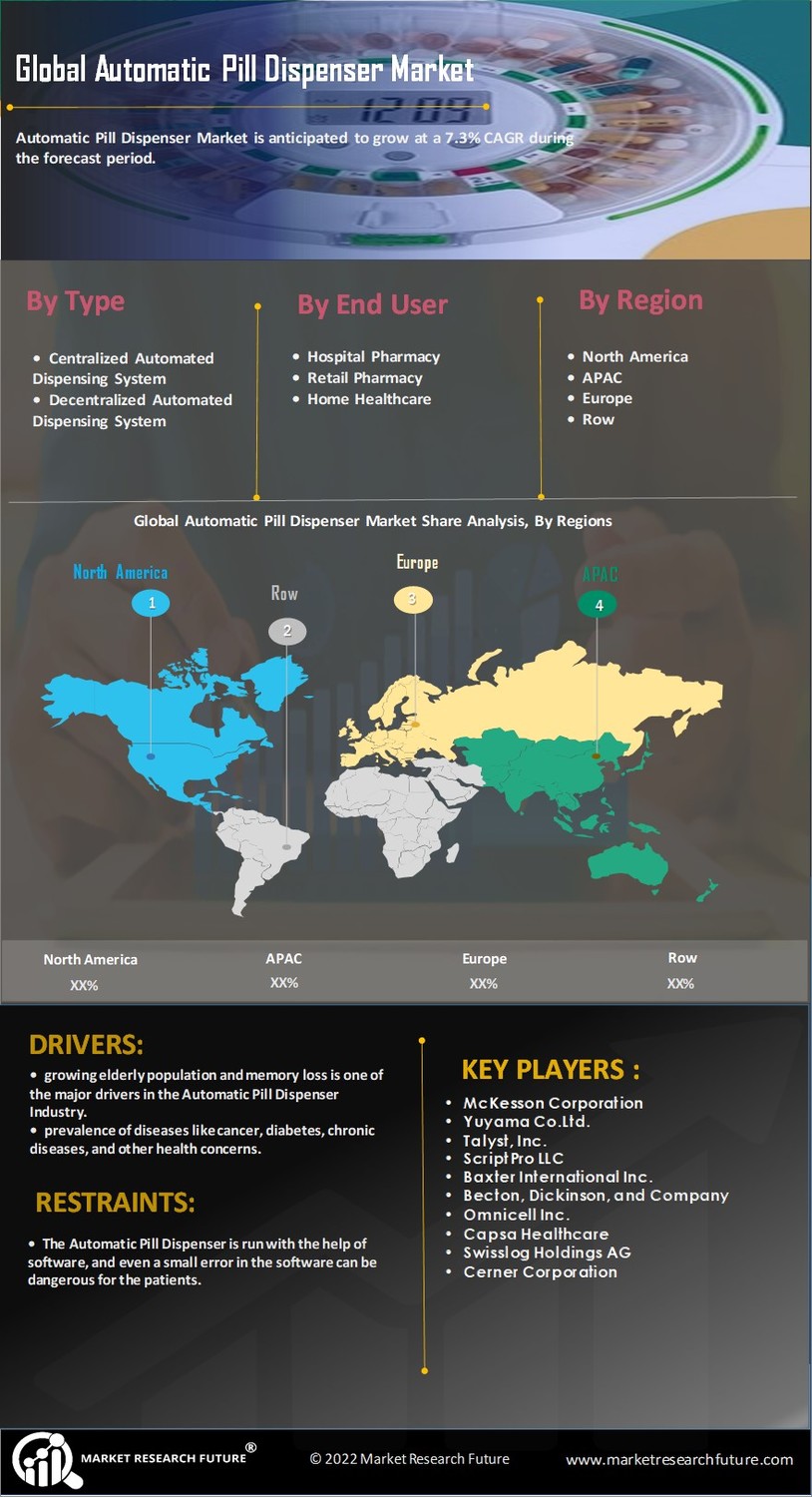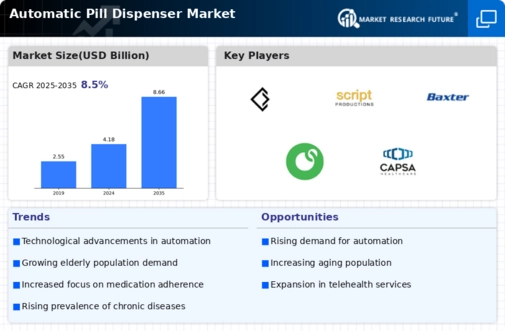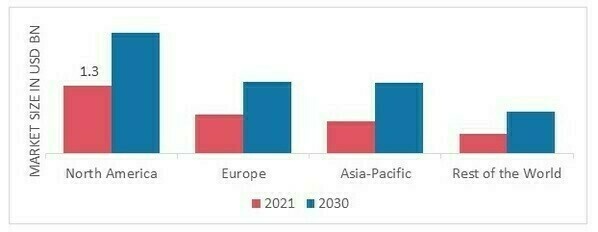Rising Aging Population
The Global Automatic Pill Dispenser Market Industry is experiencing growth driven by the increasing aging population worldwide. As individuals age, they often face chronic health conditions requiring complex medication regimens. In 2024, the market is valued at 4.18 USD Billion, reflecting the demand for solutions that enhance medication adherence among elderly patients. The convenience offered by automatic pill dispensers helps mitigate the risks associated with polypharmacy, thereby improving health outcomes. By 2035, the market is projected to reach 8.66 USD Billion, indicating a sustained interest in technologies that support the elderly in managing their medications effectively.
Healthcare Cost Reduction
The Global Automatic Pill Dispenser Market Industry is also driven by the need for healthcare cost reduction. Medication non-adherence contributes significantly to increased healthcare expenditures, including hospitalizations and emergency care. By facilitating proper medication management, automatic pill dispensers can potentially reduce these costs. The market's growth, from 4.18 USD Billion in 2024 to an anticipated 8.66 USD Billion by 2035, indicates a recognition of the economic benefits associated with improved adherence. As healthcare systems worldwide seek to optimize resources, the adoption of these devices may become a strategic priority, further propelling market growth.
Market Growth Projections
The Global Automatic Pill Dispenser Market Industry is projected to experience substantial growth in the coming years. With a market valuation of 4.18 USD Billion in 2024, it is expected to reach 8.66 USD Billion by 2035, reflecting a robust CAGR of 6.84% from 2025 to 2035. This growth trajectory indicates a rising awareness of the benefits of automatic pill dispensers in enhancing medication adherence and improving patient outcomes. As healthcare systems evolve, the demand for innovative solutions that address medication management challenges is likely to increase, further driving the expansion of this market.
Technological Advancements
Technological innovations are significantly influencing the Global Automatic Pill Dispenser Market Industry. The integration of smart technologies, such as mobile applications and remote monitoring, enhances user experience and medication management. These advancements allow caregivers and healthcare providers to track adherence and receive alerts for missed doses, thereby improving patient outcomes. The market's growth trajectory, with a projected CAGR of 6.84% from 2025 to 2035, suggests that ongoing research and development will continue to yield sophisticated devices that cater to diverse patient needs. This trend indicates a shift towards more personalized healthcare solutions, further driving market expansion.
Increasing Chronic Diseases
The prevalence of chronic diseases is a key driver for the Global Automatic Pill Dispenser Market Industry. Conditions such as diabetes, hypertension, and cardiovascular diseases necessitate consistent medication adherence. As the global population grapples with these health challenges, the demand for automatic pill dispensers is likely to rise. These devices simplify complex medication schedules, ensuring patients take their medications as prescribed. The market's valuation of 4.18 USD Billion in 2024 underscores the urgent need for effective solutions to manage chronic conditions. With the expected growth to 8.66 USD Billion by 2035, the industry is poised to play a crucial role in chronic disease management.
Regulatory Support and Initiatives
Regulatory support and initiatives are playing a pivotal role in the Global Automatic Pill Dispenser Market Industry. Governments and health organizations are increasingly recognizing the importance of medication adherence in improving public health outcomes. Initiatives aimed at promoting the use of technology in healthcare are likely to bolster market growth. For instance, policies that incentivize the adoption of automatic pill dispensers can enhance accessibility and affordability for patients. This supportive regulatory environment may contribute to the market's projected CAGR of 6.84% from 2025 to 2035, as stakeholders seek to align with evolving healthcare standards and improve patient care.







